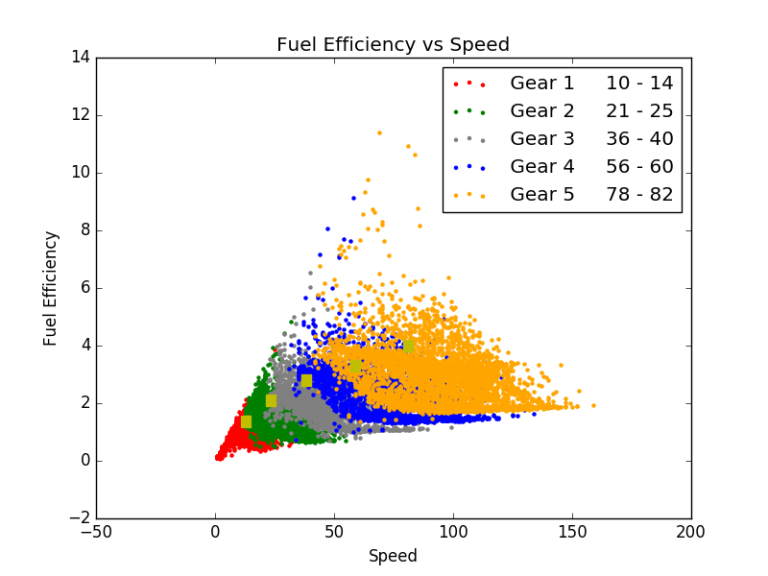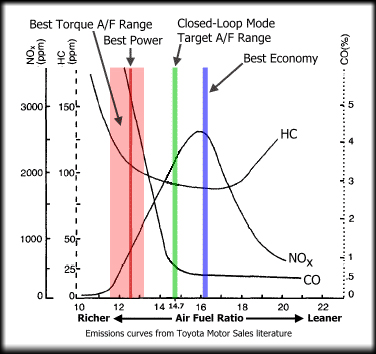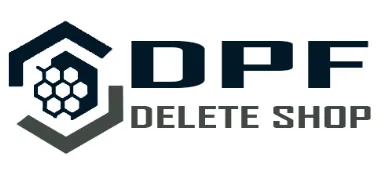support 24/7
TRUCK PERFORMANCE TUNING SERVICE
What is the distinction between a Performance Remap and an Economy Remap?

What is the distinction between a Performance and an Economy Remap?
First and foremost, we’d want to explain what ECU Remapping is. ECU Remapping is a customized software configuration that is swapped with the original ECU software to boost power, torque, and, in certain situations, fuel consumption. Remap prepares the car to reach maximum efficiency in the safest way possible. As you may know, the ECU entirely controls the automobile engine, thus remap the ECU will have substantial impacts on acceleration, fuel consumption, engine knock, and so on.
Remapping involves remapping the tables in the car’s ECU, and depending on the software of your car’s ECU, the ECU will be full with mappings for various things such as Spark Advance, Lambda, and so on. In truth, everything has been done individually, and we program remaps on purpose to meet the unique demands of each vehicle. The precise results will be determined based on the make, model, and year of your vehicle.
What exactly are Engine Maps?
We hear a lot about Engine Maps and modes, which Tuners frequently adjust and experiment with, either independently or at the request of their engineers. So we’d want to learn more about Engine maps and how they effect how automobiles function. Let’s start with the fundamentals. Previously, the accelerator pedal was physically attached to the engine throttle by a mechanical connection. The more you pressed your foot on the pedal, the more the throttle opened, allowing more air and fuel into the engine cylinders, causing the engine to produce greater power through higher combustion.
It was simple, but it had limitations. The amount of travel in the accelerator pedal is now electronically monitored and read by the “Electronic Control Unit” or ECU. The ECU then processes a slew of additional data from the vehicle to determine how to best regulate the engine’s combustion and, ultimately, power production. All of this is accomplished through the use of Engine Maps. Engine Maps are simply a collection of data tables in which the ECU examines what’s going on with the automobile and driver inputs to determine what to do with the engine.
To gain a sense of this, start with the Engine Torque Map, which is more of a map than a set of instructions, but it all fits into the bigger picture. The Engine Torque Map simply states how much torque the engine produces as normal at a given RPM and throttle setting. The RPM (engine rotational speed) and throttle level (essentially, how much fuel mixture you’re pouring into the engine) are your inputs. The torque (just how much turning force the engine produces) is an output. The chart will give you the engine torque if you know your RPM and throttle level.
So, consider a simplified scaled-down version of this Engine Map. We could simulate it to see what happens at slow, medium, and rapid RPMs. We may also examine the narrow, medium, and full throttle levels.

This produces a lovely table with nine alternative possibilities as outputs. So, if the engine is operating at low RPM and we’re only lightly pressing the throttle, the map predicts that the engine will produce a modest amount of torque. Full throttle at high RPM generates a lot of torque, and so on. Obviously, real-world Engine Maps are much more detailed than that, since they require more than just our three gradations of input. As a result, this Engine Torque Map just represents the engine’s regular behavior. We may get this information by running the engine on a testing Dyno and monitoring its torque levels in various conditions.
But what if we wanted to construct a map that behaved differently than usual?
In this regard, a Performance Remap differs from an Economy Remap. This is where our unique engine maps come in. We may modify these maps such that when a driver presses the accelerator pedal at a specific engine speed, the torque production varies depending on the Map. Actually, it is determined by the demands of the consumer. For example, if we wish to enhance fuel usage, we could want to raise the Air/Fuel ratio at lower REVs. Because the consumer does not require the engine’s maximum power.
We term it “Economy Remapping” in the tuning industry. To get the most out of the engine, we may want to make the transition from low to high torque more dramatic or reduce the Air/Fuel ratio. That’s what “Performance Remapping” is all about.
The concept behind these maps is that we will require a specific level of torque or power from the engine based on certain conditions. We’ll instruct the engine that if I press the throttle halfway and you’re revving at 8000 RPM, you should give me 180 Newton Meters of torque or whatever.
Assume you are the driver, and when you adjust the pedal with your foot, you will have an expectation of what the engine will perform and how much power will be transferred to the wheels.
According to the guidelines, 0% and 100% throttle degrees must correspond to 0% and 100% of available torque, respectively. So, 50% throttle creates 50% torque, 27% throttle produces 27% torque, and so on. “That makes sense,” you would think. That would be really natural to me as a driver. I’d be able to pinpoint my exact location. But consider this: accelerating out of a slow bend requires extreme caution to avoid wheel spin.
It slows you down and wears out your tires. This happens when you apply too much torque to the tires. As a tuner, you may like the pedal to be more sensitive at initially. Each centimeter of pedal movement results in a smaller change in torque. As a result, you can control a gradual rise in torque at lower speeds more precisely.
As a result, the Engine Map would initially have a shallower graph. Perhaps the first 30% of the pedal provides just 10% of the engine torque. This is one of the circumstances that contribute to the driver demand torque maps.
Examples of various Engine Maps scenarios:
Rainy weather
High elevation
High relative humidity
Saving Qualifying Power
Slow turns
Rapid speeds
Finally, you must remap the automobile to meet the wants of your consumers. If they desire an Economy Remap, you must change all of the tables accordingly. On the other hand, if they want to enhance the power and get the most out of the engine, they must make adjustments in all of those tables. This is referred to as a Performance Remap.
Please contact us at support@dpf-deleteshop.com for further information and potential concerns.

DIESEL TUNING SOLUTIONS
PERFORMANCE TUNING ON DIESEL ECM
Performance tuning for maximum power in diesel engine control modules (ECMs) involves adjusting various parameters to optimize the engine’s power output. The following are common areas of focus when tuning a diesel engine for maximum power:
Fuel Injection Timing:
The timing of the fuel injection directly affects the engine’s power output. Advancing the fuel injection timing can increase power, but it must be done carefully to avoid engine damage.
Fuel Pressure:
Fuel pressure affects the engine’s power output. Increasing the fuel pressure can increase power, but it also increases the wear and tear on the fuel system.
Boost Pressure:
The turbocharger’s boost pressure affects the engine’s power output. Increasing the boost pressure can increase power, but it must be done carefully to avoid overloading the engine and causing damage.
Injector Calibration:
Injector calibration determines the amount of fuel that is injected into the engine. Improper injector calibration can result in reduced power output.
Exhaust Gas Recirculation (EGR):
The EGR system helps reduce emissions by recirculating a portion of the exhaust gases back into the engine. Disabling or reducing the EGR system can increase power output, but it also increases emissions
Engine Load Limiting:
Engine load limiting is a strategy used to prevent the engine from being overloaded and causing damage. This can be adjusted to increase power output, but it must be done carefully to avoid overloading the engine.
Air to Fuel Ratio:
The air to fuel ratio affects the engine’s power output. Rich air to fuel ratios (more fuel, less air) can increase power output, but they also increase emissions and fuel consumption.
Turbine Housing:
The turbine housing affects the engine’s power output. A larger turbine housing can increase power output, but it also increases the turbocharger’s lag.
Engine Speed Limiting:
Engine speed limiting is a strategy used to prevent the engine from over-revving and causing damage. This can be adjusted to increase power output, but it must be done carefully to avoid overloading the engine.
Camshaft Timing:
The camshaft timing affects the engine’s power output. Advancing the camshaft timing can increase power output, but it must be done carefully to avoid engine damage.
Engine Breathing:
Engine breathing (the flow of air into and out of the engine) can affect the engine’s power output. Improving the engine’s breathing (e.g. installing a performance air intake and exhaust system) can increase power output.
accusantium
Sed ut perspiciatis unde omnis iste natus error sit voluptatem accusantium doloremque laudantium.
To properly tune a diesel engine for maximum power, it is important to have access to high-quality diagnostic equipment and software. This equipment can be used to monitor the engine’s performance and make adjustments as necessary. The process of tuning a diesel engine for maximum power can be time-consuming and complex, so it is best to work with an experienced diesel engine tuning specialist.
It is also important to note that tuning a diesel engine for maximum power may result in reduced fuel efficiency and increased emissions. In some cases, it may also void the engine’s warranty. Therefore, it is important to weigh the benefits of increased power against the potential drawbacks before embarking on a tuning project.
In conclusion, performance tuning for maximum power in diesel engines involves adjusting various parameters to optimize the engine’s power output. The areas of focus include fuel injection timing, fuel pressure, boost pressure, injector calibration, EGR, engine load limiting, air to fuel ratio, turbine housing, engine speed limiting, camshaft timing, and engine breathing. The process of tuning a diesel engine

ADVANTAGES OF PERFORMANCE TUNING ON ECM DIESEL
Performance tuning of a diesel engine control module (ECM) can bring many advantages to the engine and overall vehicle performance. Some of the key benefits of performance tuning include:
Increased Power Output:
The most significant advantage of performance tuning is increased power output. By adjusting various parameters, such as fuel injection timing, boost pressure, and air to fuel ratio, the engine can produce more power, resulting in improved acceleration and overall performance.
Improved Throttle Response:
Performance tuning can improve throttle response, making the engine feel more responsive and making it easier to drive. This can also increase driver enjoyment and confidence.
Better Fuel Efficiency:
Properly tuning a diesel engine can also improve fuel efficiency. By optimizing the air to fuel ratio and reducing engine load, the engine can operate more efficiently, reducing fuel consumption and saving money on fuel costs.
Increased Durability:
Performance tuning can also increase the engine’s durability by reducing the strain on various components and preventing overloading. This can result in a longer lifespan for the engine and fewer repairs
Increased Towing Capacity:
For those who use their vehicles for towing, performance tuning can increase the towing capacity. This can result in the ability to tow heavier loads with ease, making it a great option for those who need to transport heavy equipment or large loads.
Improved Driveability:
Performance tuning can improve driveability by making the engine smoother and more refined. This can result in a more enjoyable driving experience and improved comfort on long trips.
Enhanced Engine Sound:
For those who enjoy the sound of a diesel engine, performance tuning can enhance the engine’s sound, making it more aggressive and enjoyable to listen to.
Improved Resale Value:
A vehicle with a performance-tuned diesel engine can have an improved resale value compared to an unmodified engine. This can make performance tuning a wise investment for those who plan to sell their vehicle in the future
Reduced Emissions:
In some cases, performance tuning can actually reduce emissions by allowing the engine to operate more efficiently. This can result in a cleaner and more environmentally friendly engine.
It is important to note that performance tuning may not be suitable for all diesel engines and vehicles. It is important to research and consult with a professional before embarking on a tuning project to ensure that the engine and vehicle can handle the increased power output.
In conclusion, performance tuning of a diesel engine control module (ECM) can bring many benefits to the engine and overall vehicle performance. Increased power output, improved throttle response, better fuel efficiency, increased durability, increased towing capacity, improved driveability, enhanced engine sound, improved resale value, reduced emissions, and customization are just some of the advantages of performance tuning. However, it is important to carefully research and consult with a professional before embarking on a tuning project.
DISCLAIMER FOR OFF-HIGHWAY TUNING
It is important to note that off-highway tuning, including DPF delete programming, is illegal in some areas and can void the manufacturer’s warranty. Off-highway tuning refers to modifications made to a vehicle that are not intended for use on public roads.
By installing off-highway tuning products, you are assuming all liability for the use of the vehicle and any resulting damages or injuries. These modifications may not comply with the laws and regulations in your area, and you could be subject to fines and penalties if caught using the vehicle on public roads.
Off-highway tuning products are intended for closed-course racing or off-road use only and are not legal for use on public roads. It is your responsibility to ensure that you are using these products in compliance with all applicable laws and regulations.
+51960362662
+51966080192
Location
LIMA,PERU
support@dpf-deleteshop.com
Store Hours
M-F: 8am – 5pm
S-S: 9am – 4pm
DPF | EGR | SCR Delete Service Enquiry
DPF Delete Shop
About Us
Disclaimer
Terms & Conditions
Links
Services
Privacy Policy
FAQs
Contact
support@dpf-deleteshop.com
+51960362662
+51966080192
PAYMENT AND SUPPORT


